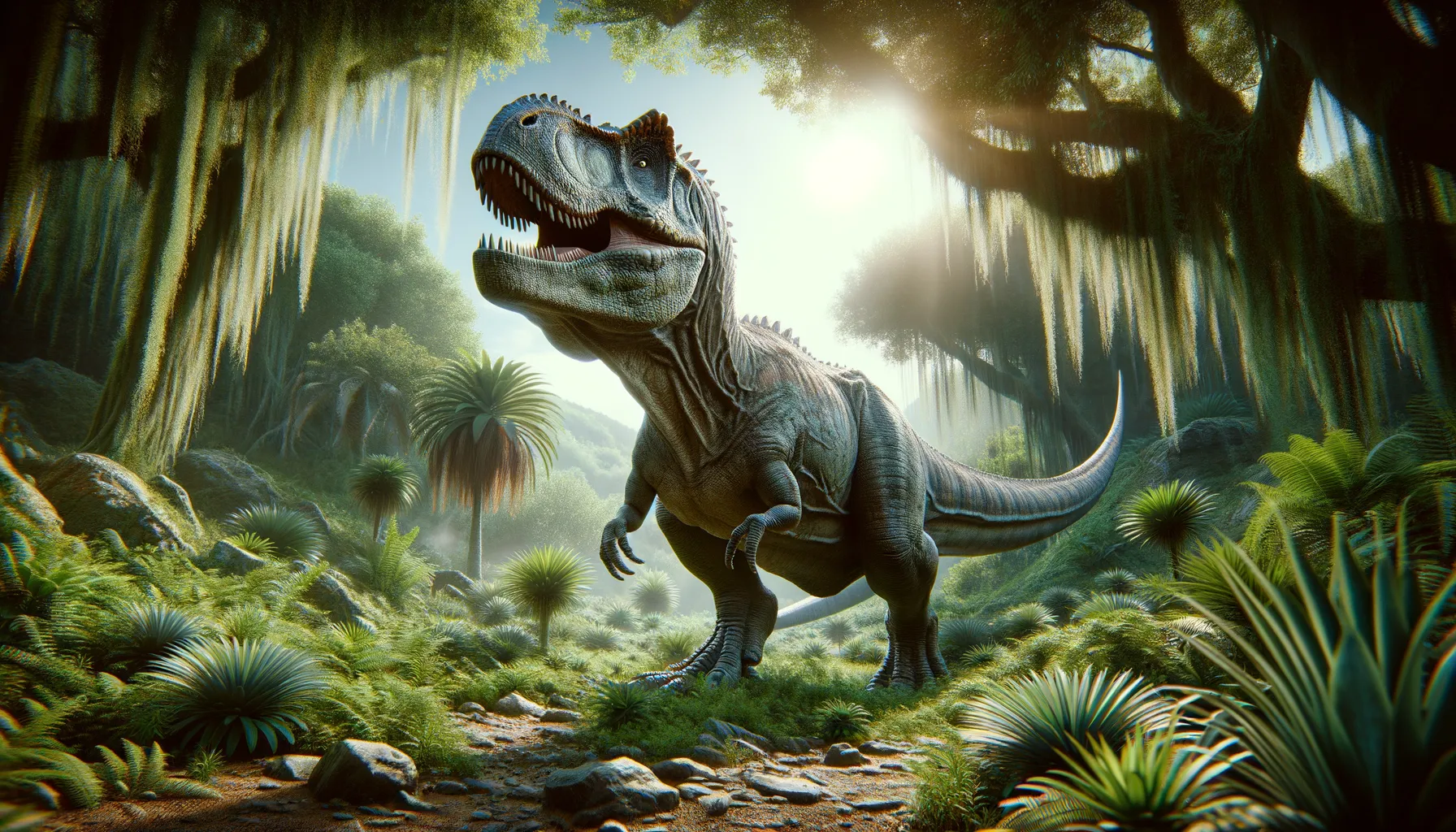
Saldamosaurus
The resilient giant of ancient landscapes.
Period
Cretaceous
Length
Close to 10 meters long.
Height
Approximately 4 meters tall.
Weight
Around 3,000 to 5,000 kilograms.
Saldamosaurus was a fascinating dinosaur from millions of years ago, known for its large size and unique features. As a herbivore, it roamed ancient landscapes in search of plants to consume. Its skeletal structure suggests a strong and resilient build capable of withstanding the era's challenges. Despite these insights, much about this dinosaur remains a mystery that continues to intrigue paleontologists.
Diet
Saldamosaurus was a herbivore, primarily feeding on ferns, cycads, and conifers. Its sturdy jaws and teeth were adapted to grind tough plant materials, making it well-suited to a diet of dense vegetation.
Hunting
As a herbivore, Saldamosaurus did not engage in traditional hunting. Instead, it grazed on various plant species, moving slowly through its habitat to find ample food sources. Its size likely deterred some predators, though it had to be cautious of large carnivores.
Environmental challenges
Saldamosaurus faced environmental challenges such as fluctuating climates, which may have affected food availability. Changing landscapes and the presence of predators meant it needed to constantly adapt. Seasonal changes might have influenced its migration patterns in search of lush feeding grounds.
Speed
Known to be moderately fast.
Lifespan
Estimated to be around 20 to 30 years.
First discovery
Unearthed in 1934 in Mongolia.
Fun Facts
- Saldamosaurus was a herbivorous dinosaur that lived around 100 million years ago.
- This dinosaur is known for its distinctively elongated neck, which helped it reach high foliage.
- Fossils of Saldamosaurus have been mainly found in what is now South America.
- Despite its large size, Saldamosaurus likely moved in herds for protection from predators.
- Its name, Saldamosaurus, means 'Saldamo lizard', named after the region where it was discovered.
- Saldamosaurus had thick legs to support its heavy body, similar to modern-day elephants.
- Paleontologists believe Saldamosaurus could live up to 70 years in the wild.
Growth and Development
Scientists believe that Saldamosaurus experienced relatively rapid growth periods, especially during its juvenile stage. This allowed it to reach maturity at a steady pace, gaining height and weight quickly. Fossil evidence suggests it had a robust bone structure that supported its considerable size.
Habitat
Saldamosaurus inhabited forested areas rich in vegetation, providing ample food sources. Its preferred environment likely included riverbanks and floodplains, which supported its dietary needs. These regions offered both sustenance and some protection from predators.
Interaction with other species
While Saldamosaurus sought to avoid large predators, it likely coexisted with smaller herbivores. Fossil evidence shows potential overlap with species that shared its feeding grounds. This may have led to competition, driving some social and defensive behaviors.
Natural lifespan
Saldamosaurus was estimated to have a natural lifespan of about 25 years.
Reproduction
Saldamosaurus likely reproduced by laying eggs, similar to other dinosaurs of its time. Nesting sites were probable in hidden or sheltered areas to increase offspring survival. The incubation periods and parental investments are still subjects of research.
Social behaviour
Saldamosaurus may have exhibited social behaviors such as grazing in groups to deter predators. The presence of fossilized remains in clusters suggests some level of herd dynamics. Interactions within these groups could have included mutual protection and communal feeding habits.
Fossil locations
Fossils of Saldamosaurus have been discovered in regions that were once part of a vast prehistoric forest. Significant findings in Mongolia provided critical insights into its physical attributes and lifestyle. Paleoenvironmental studies continue to offer clues about its ancient habitats.
